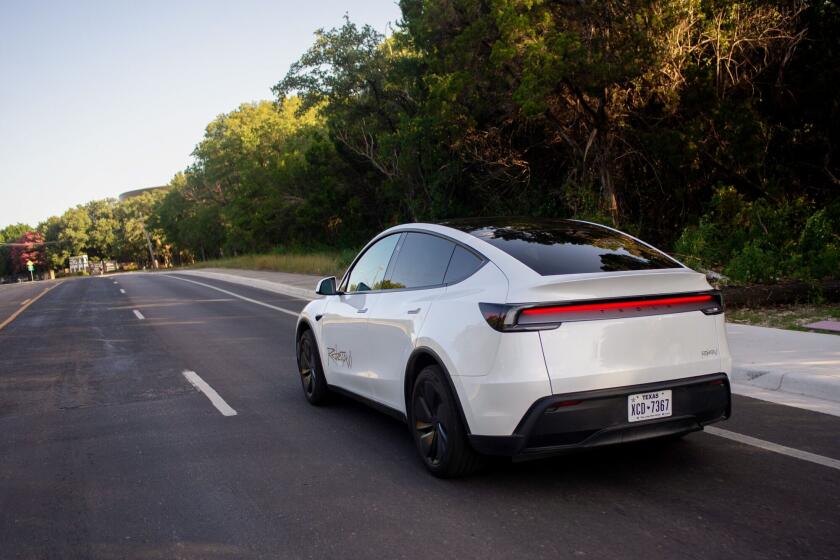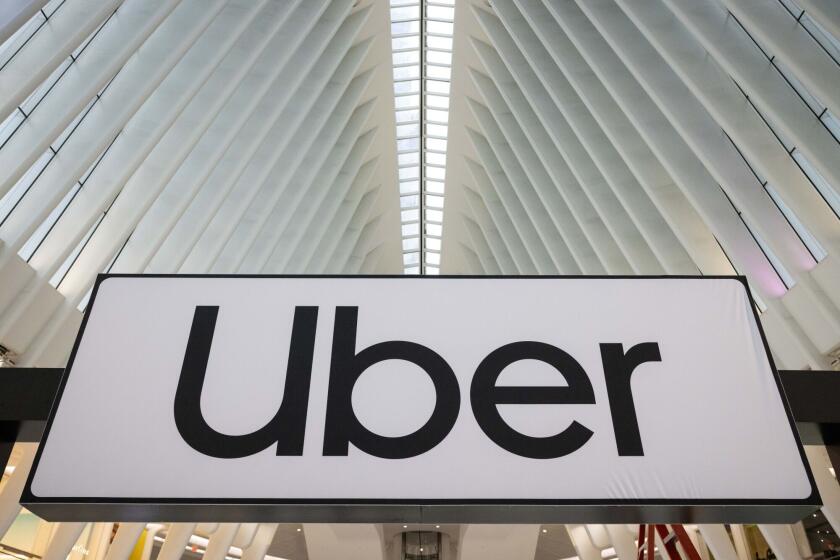When It’s Built, Will Car-Poolers Come?
- Share via
For the relatively few who can use them, the looming ramps connecting carpool lanes to carpool lanes may seem like a slice of driving heaven: congestion-free travel virtually guaranteed at some of the busiest interchanges in the country.
The price of admission? Finding at least one passenger to ride along with you, something survey after survey has shown few people are inclined to do.
In Orange County, home to the most extensive carpool lane system per freeway mile in the state, residents report that they are even less likely to change commuting habits than in other counties where the benefits are fewer.
Even so, county officials have pursued an aggressive carpool lane plan that includes five of the six freeway-to-freeway carpool-lane connectors in the state. The five Orange County ramps will cost more than $300 million to complete. The only other ramps in operation or planned carry car-poolers between the Century and Harbor freeways in Los Angeles.
Orange County’s connector boom comes at a time when carpool lanes are rapidly losing favor elsewhere in the country, and few jurisdictions are building the costly connectors. Perhaps more significantly, the connectors completed so far in Orange County have performed far short of the number of cars they can carry and remain free-flowing. For example, the $36-million connector between the Santa Ana and Costa Mesa freeways, open since 1995 and designed to carry 1,800 cars, carries 950 cars an hour southbound and 740 cars an hour northbound at peak times.
Many transportation experts, even some who support high-occupancy vehicle, or HOV, systems, question whether connectors are worth the hefty price tag.
“It’s a gold-plated solution that benefits only a small fraction of the commuting population,” said Kenneth Orski, a transportation consultant based in Washington, D.C. “It’s great for those relatively few commuters who can use them. But from a commuting point of view, it’s a waste of money.”
Concern about the cost-effectiveness of the ramps led Southern California Assn. of Governments officials to ask Orange County planners to reconsider including connectors on plans to expand the Garden Grove Freeway. With connectors, SCAG planner Hasan Ikhrata said, the cost of the project would double from $200 million to $400 million.
But SCAG and other regional planning groups have remained fierce proponents of an expanded carpool lane system in Southern California as a way to battle gridlock in the face of a projected population boom. By 2015, Caltrans plans to double the number of carpool lanes on freeways--from 305 miles to 680 miles--in Los Angeles, Orange, Riverside, San Bernardino and Ventura counties.
Much of the work will be funded with federal dollars earmarked for pollution-reducing transportation solutions. In support of the policy, officials cite statistics that show California is the only state in the nation not to see a decline in the number of carpools in recent years. “We aren’t forming as many new carpools as we would like, but the carpool lanes throughout most of the system are well utilized and moving a lot of people every day,” said Mark Pisano, SCAG’s executive director.
What role connectors could play in enticing more riders has yet to be seen, Pisano said. The ramps, he said, may go a long way toward making carpools a much faster way to get to work for commuters, the one factor proven to cause people to change habits.
The debate about the ramps is likely to surface time and again as long as carpools continue to remain in place in the state. Without the connectors, getting from one freeway’s diamond lane to another’s becomes a purgatory of sorts, forcing car-poolers across congested lanes of regular freeway traffic, slowing down their trip and making dangerous weaving through traffic necessary.
Of course, with carpool lanes it often comes down to a chicken-or-egg argument. Can you or can’t you judge how well they work before the entire system--connectors and all--is in place?
“The longer the distance people can go on carpool lanes the more likely they will change their travel behavior to use them,” said Cheryl Collier, who manages the SCAG’s Ride Share program. “Having a seamless commute would make a difference.”
Foes of carpool lanes say the multimillion-dollar flyovers are another example of throwing good money after bad.
“They’d be better off pouring the money down a rat hole,” said Jim Thomas, a Marin County-based activist for the National Motorists Assn., a grass-roots group that backed the abolition of the national speed limit in 1996 and is now working to demolish carpool-lane systems nationwide. “Carpool lanes don’t work, have never worked and aren’t going to work because they build these connectors.”
The subject of carpool lanes has long had the ability to make commuters’ blood boil. Orange County-based Drivers for Highway Safety has been fighting the lanes since the mid-1980s and remains one of the most active anti-carpool groups in the nation. Wayne King, the group’s leader, said the connectors are just the latest evidence that officials are going to go ahead with carpool lanes no matter what.
“It’s not forward-thinking to ignore the compelling evidence after 12 years of carpool lane operation,” King said. “They don’t get people out of their cars to share rides with someone else.”
But county transportation officials argue that carpool lane opponents ignore the reality of funding modern road building and improvements. Monte Ward, director of special projects at the Orange County Transportation Authority, said that carpool lanes have been a pragmatic way to fight congestion on Orange County roads.
According to OCTA figures, at least $95 million in federal funds targeted specifically for HOV construction has been used in the county since the mid-1980s.
*
Work on the last of the currently planned connectors--at the San Diego and Costa Mesa freeway interchange--gets underway in November and will last for about four years at a cost of about $150 million. Between now and then, carpool connectors are scheduled to open at the Santa Ana and Riverside freeways, the convergence of the Santa Ana, Garden Grove and Orange freeways and the Orange and Riverside freeways.
Still, county officials say the ultimate fate of the HOV system is not written in stone. Already, there is some precedent for reversing course. Last year, New Jersey gave up on carpool lanes on two congested freeways, becoming the first state to do so without having to reimburse hundreds of millions of dollars to the federal government.
Ward said there may be plenty of room to fine-tune the system once it is finished and county officials can judge how well used the lanes are. When the system is complete, about 85% of Orange County’s 187 miles of freeway will have carpool lanes.
“Once we have it in place I think there will be room to talk about how to maximize the effectiveness of the system,” Ward said. “There has been talk about considering a HOT lane system, charging single motorists a toll to use the lanes. Could we use the lanes for trucks only? For some sort of transit system? I’m not sure what the system will look like 20 years from now.”
(BEGIN TEXT OF INFOBOX / INFOGRAPHIC)
Wheels Overhead
With one carpool to carpool connector already operating at the 5/55, Orange County commuters will see four more open in the next four years at a total price tag of more than $300 million.
O.C. CARPOOL CONNECTORS
5/91: Late 2000
55/405: 2004
El Toro Y: Jan. ’97
57/91: Early 2000
5/55: June ’96
More to Read
Sign up for Essential California
The most important California stories and recommendations in your inbox every morning.
You may occasionally receive promotional content from the Los Angeles Times.














